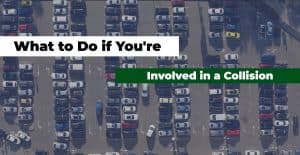While Colorado summers are unfortunately becoming known for their increasingly severe bouts of forest fires, the flash floods that occurred last weekend helped to remind motorists that they need to always be prepared to safely handle wet-weather driving conditions, even during seasons that are notoriously dry. Most rainy circumstances do not pose the same high level of risk to drivers that flash-flooding does, but in order to safely drive in any degree of rainfall, it’s important that motorists take a few extra precautions.
To help you stay safe when you find yourself on wet roads, here are a few important safety measures to keep in mind:
Keep an Eye on Weather Conditions
Rain is a common occurrence, and its presence generally isn’t hazardous enough to keep motorists from getting in their vehicles and heading toward where they need to go. That said, extremely heavy rainfall can pose threats that are more serious. You can prevent being caught in a potentially dangerous situation by staying updated on projected weather forecasts. A daily internet search can help you see what weather conditions are expected in the upcoming days, or you can utilize apps that will alert you of any expected severe weather that may encourage you to postpone any unnecessary trips. Some apps even work without WiFi, which is ideal if you will be traveling through areas with limited service.
Keep in mind that rain doesn’t have to be severe in order to keep you inside. If you simply feel anxious driving on wet roads and can easily delay an errand until the weather clears up, there is nothing wrong with waiting until the sun comes out before hopping in your vehicle.
Ensure That Your Windshield Wipers Work Effectively
It should go without saying that you should use your windshield wipers if you drive while it’s raining, but in order to ensure that you will have adequate visibility, it’s important to make sure that your windshield wipers are in top working condition. They may need to be replaced if they:
- Leave streaks on the window
- Have damaged rubber or bent frames
- Make squeaking or chattering sounds as they slide across the window
- Don’t come into contact with certain parts of the window
Slow Your Speed and Increase Your Following Distance
Speed limits are designed for ideal (i.e., dry) driving conditions, so if the roads are wet, it’s a good idea to slow down. A general guideline is to reduce your speed by about a third if it’s raining or snowing outside.
You also want to maintain control over your vehicle, so it’s often best to avoid using cruise control if it’s raining. Using cruise control can increase your risk of hydroplaning (more on this below), and because you need to put your foot on the brakes in order to turn it off, this can also increase the likelihood of skidding on the wet roads. Modern vehicles do have better traction and electronic stability control features that make it safer to use cruise control in wet or slippery conditions, but it’s always a good idea to first check with your vehicle manufacturer’s guide on the recommendations.
Additionally, it’s important to increase your following distance if the roads are wet in order to allow adequate room to react and safely maneuver your vehicle in an emergency situation. The recommended following distance is about three seconds for normal driving conditions, but when it’s raining, the general guideline is to increase that amount to six seconds.
Be Mindful of Hydroplaning
Hydroplaning occurs when excess moisture causes your tires to lose contact with the road and ride on the surface of the water. This can cause you to lose control of your vehicle by increasing the likelihood that you will slide and skid.
The best thing you can do is to minimize the likelihood of hydroplaning by:
- Avoiding travel during times when rain is likely
- Driving around puddles of standing water if possible
- Avoiding harsh braking or sudden turns/lane changes
- Driving slowly and increasing following distance
- Ensuring that your tires have adequate tread depth and are properly inflated
- Following the tire tracks created by the vehicle in front of you
While preventing hydroplaning is the ideal way to stay safe while it’s raining, it’s also important to know what to do if you can’t avoid this stress-inducing scenario. Some safety tips to keep in mind if you do find yourself hydroplaning include:
- Trying to remain calm. Panicking can result in risky mistakes.
- Slowly easing your foot off of the accelerator and the brake pedal.
- Keeping both hands firmly on the wheel, and turning the steering wheel in the direction that you want your vehicle to go. If necessary, turn your steering wheel in the other direction in order to even out your tires and align your vehicle toward your preferred direction. Continue doing this until your tires have regained traction.
Try to Avoid Slamming on Your Brakes
Slamming on your brakes when the roads are wet and slippery increases the likelihood that your vehicle will slide forward. Braking early and gently will allow you to maintain stronger control over your vehicle, and doing so will also communicate an advance notice to any drivers behind you of your intention to slow down or come to a stop. This allows them to slowly and safely apply pressure to their brakes as well, which can reduce the odds of them rear-ending your vehicle.
Turn on Your Headlights
In many states, it’s the law to turn on your headlights when it’s raining. This increases your visibility on the road in front of you, and it also helps other drivers to be better able to see your vehicle. However, it’s important to use your headlights and not your brights. Using your brights will reflect light off of the wet roads, and this makes it more difficult for you and other drivers to see.
Take a Defensive Drivers Ed Class
Taking a defensive drivers ed class is a great way to learn advanced driving skills that will help you be better equipped to avoid hazards and respond to emergency situations. Most defensive driving courses allow you to gain hands-on experience handling a real-life skid in a safe and controlled environment. Having an intellectual understanding of what steps to take if you experience hydroplaning is important, but being able to actually practice this potentially life-saving technique will go much further in ensuring that you will be able to properly execute those steps if the need to do so presents itself.
Learn Defensive Driving Skills With Colorado’s Most Trusted Driving School!
Between our comprehensive drivers ed courses, private driving lessons, and our engaging defensive drivers ed classes, DriveSafe can help you learn the skills necessary to become a safe and competent motorist.
Our defensive drivers ed class provides students with the tools they need to expertly avoid hazardous scenarios and safely handle any urgent scenarios that they run into on the road. It also involves expert-level training on minimizing distractions and mastering the important basics of car maintenance.
Sign up for one of our defensive skills classes today, or get in touch with one of our friendly customer service representatives for more information. We can’t wait to help you on your journey to becoming a safe and responsible Colorado driver!












